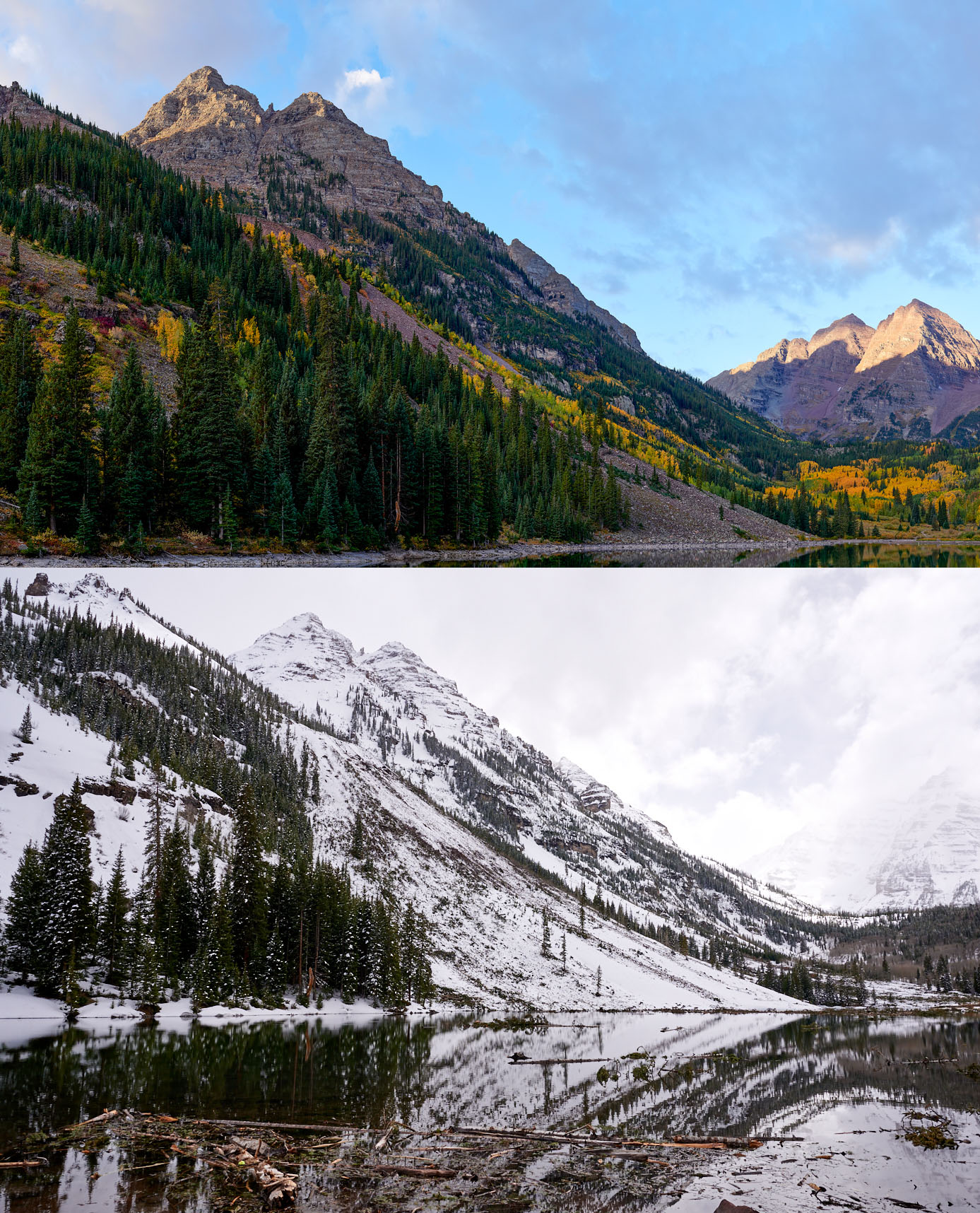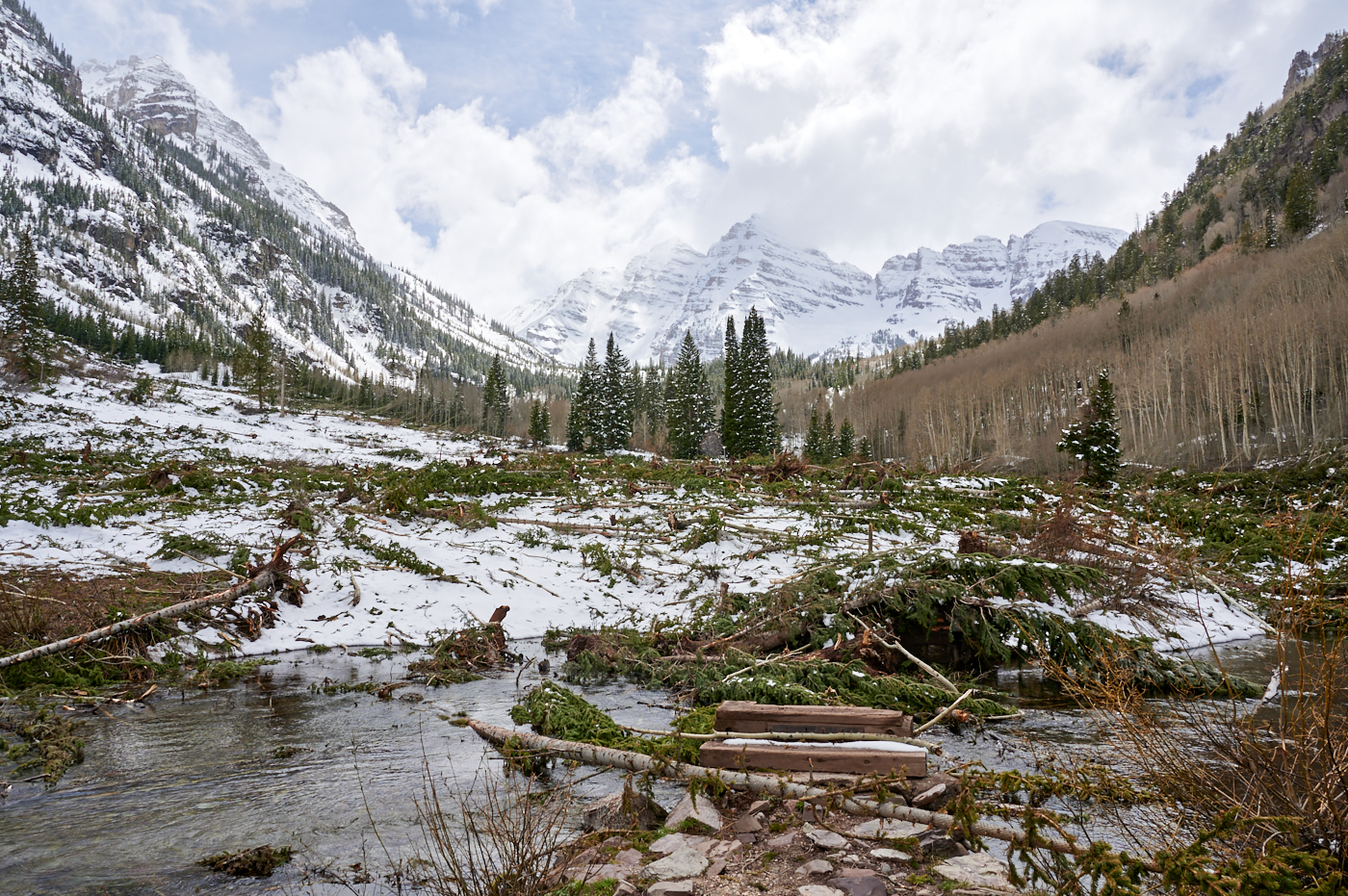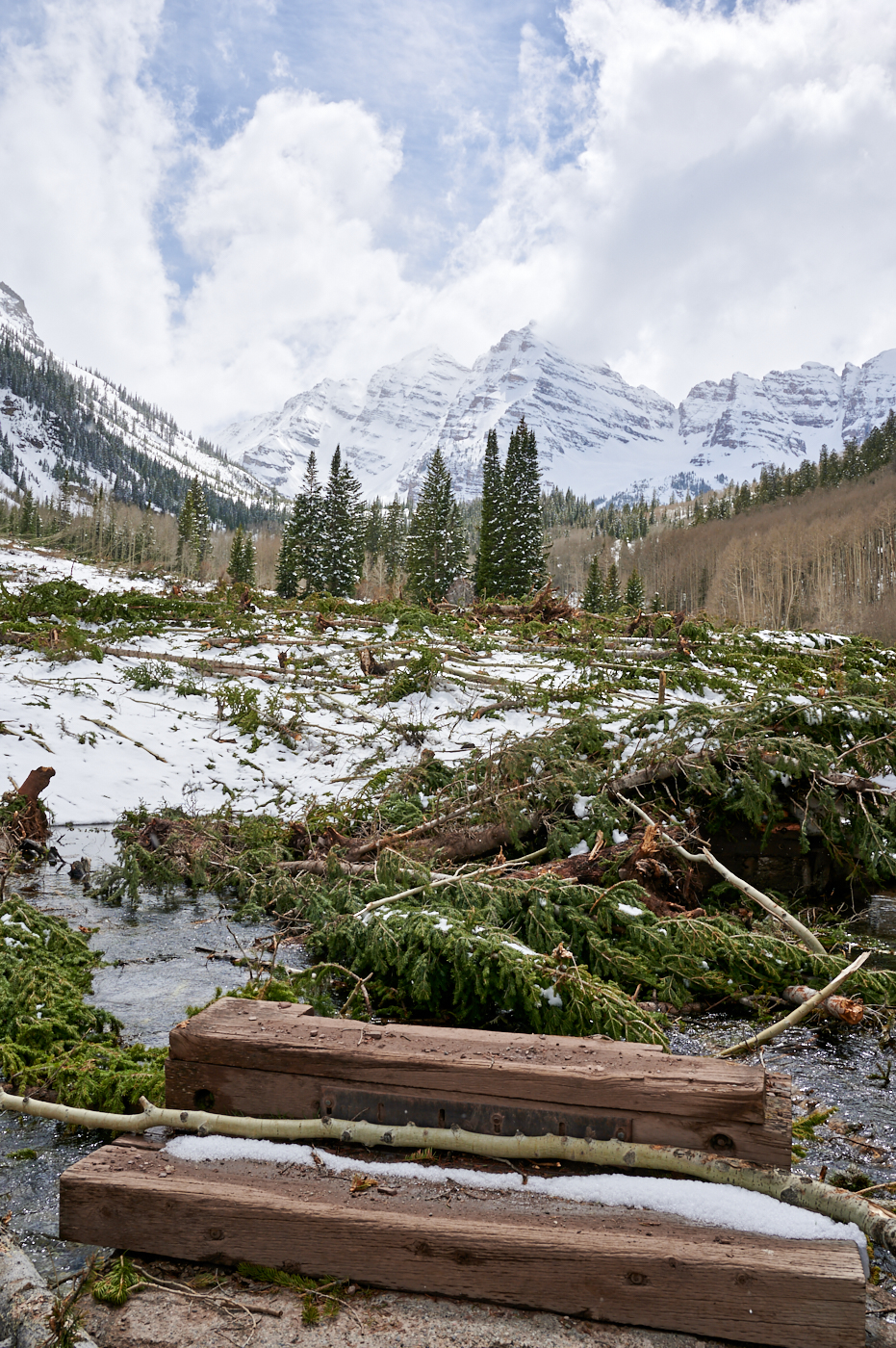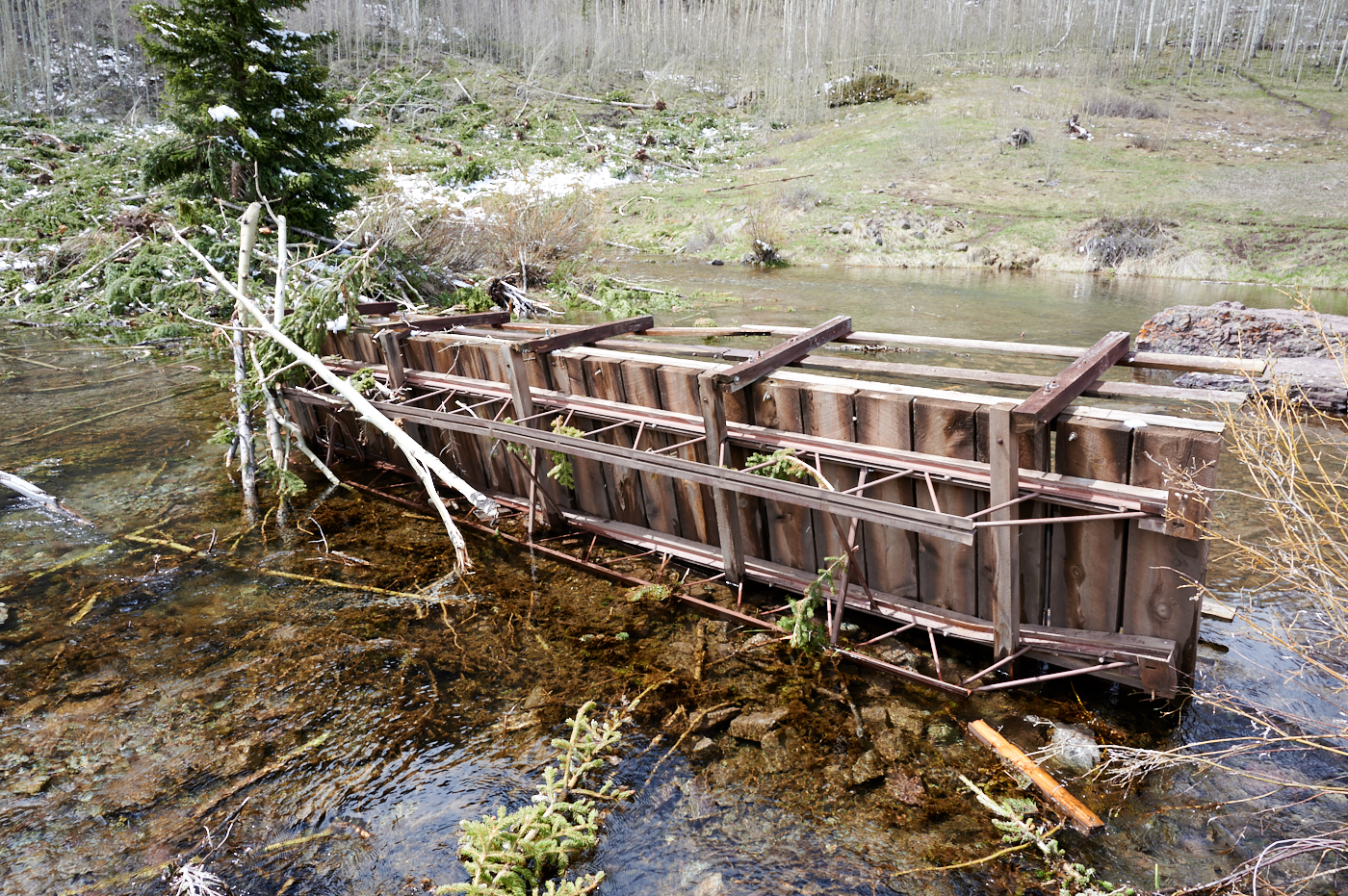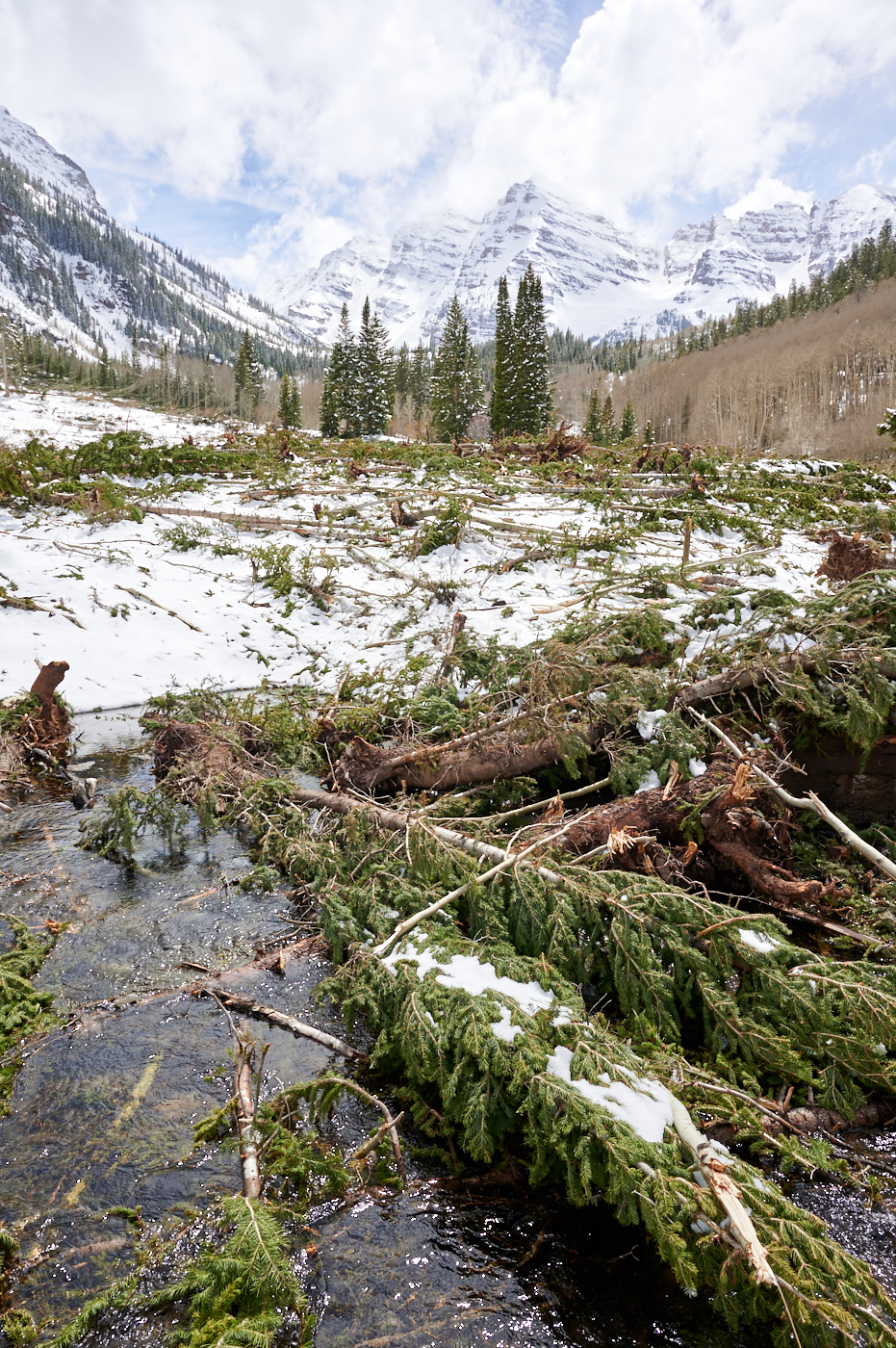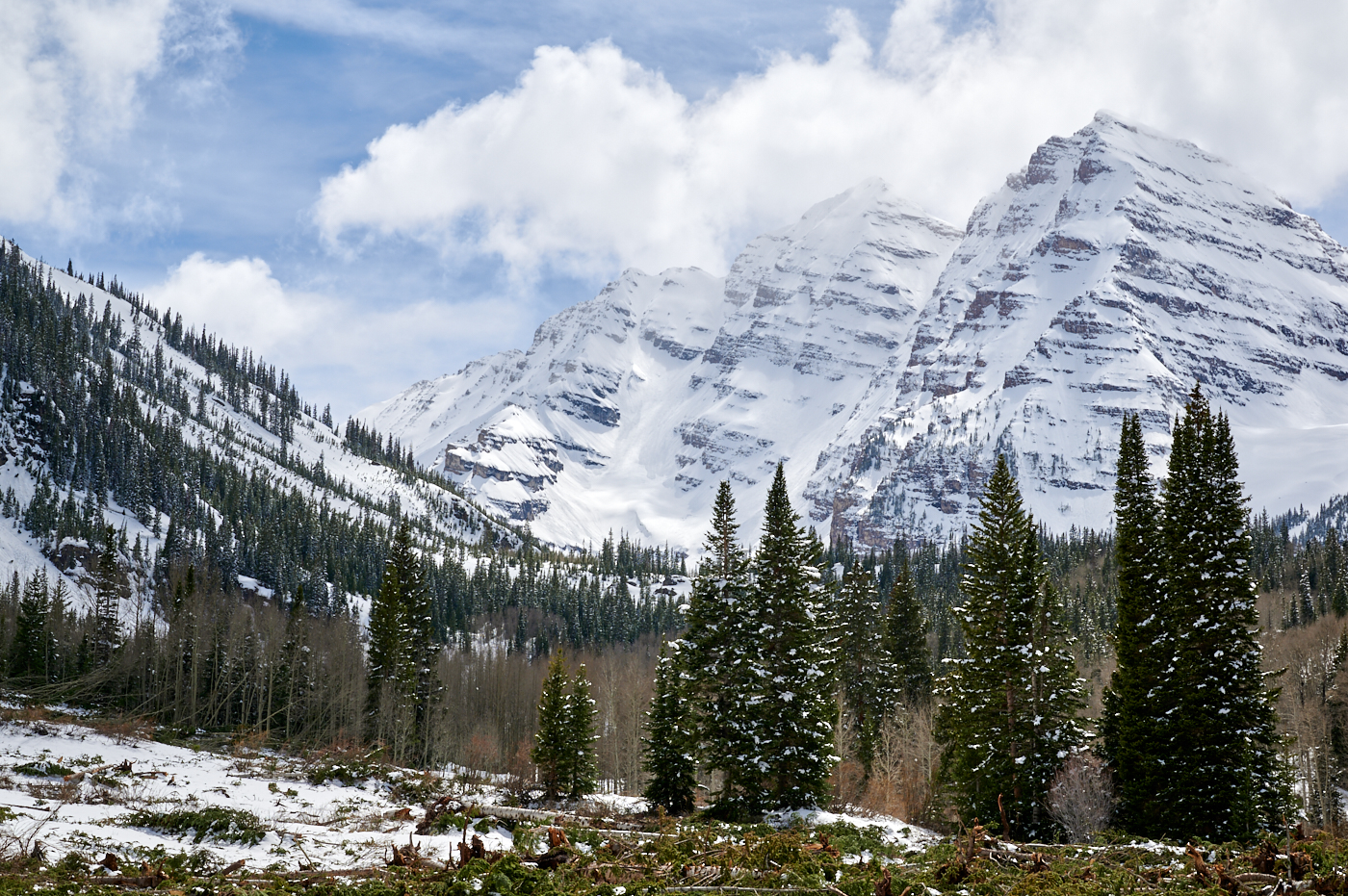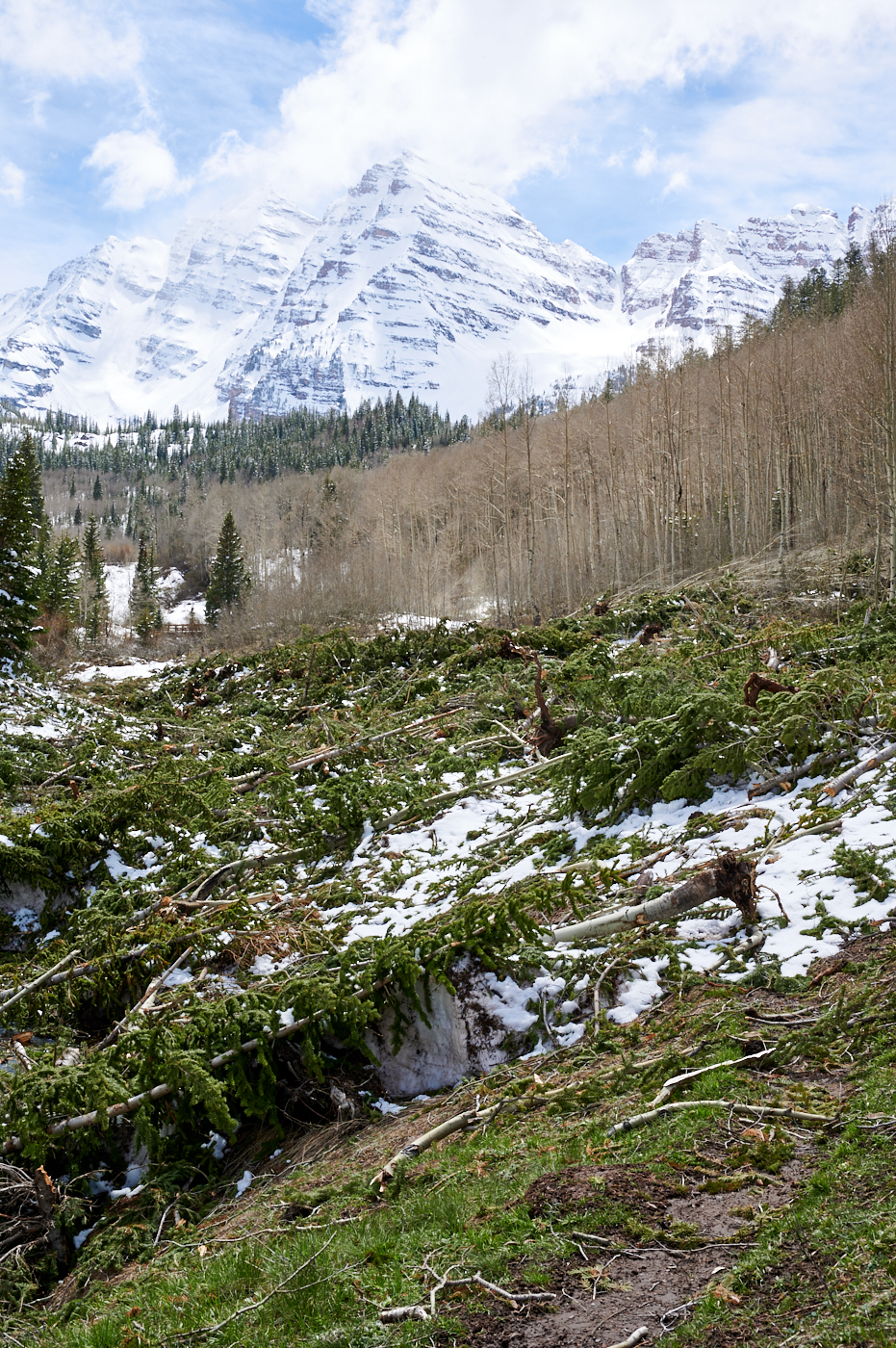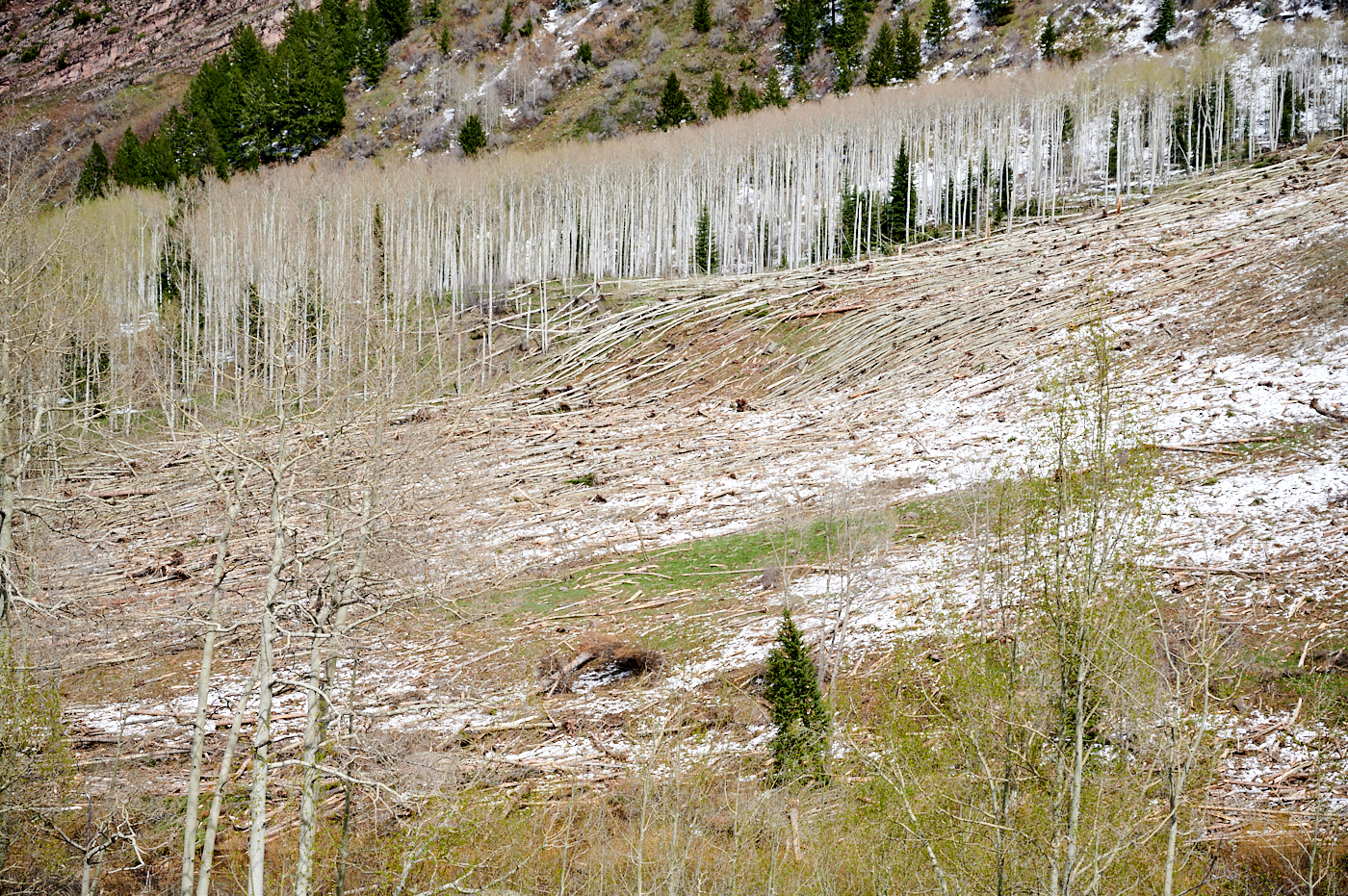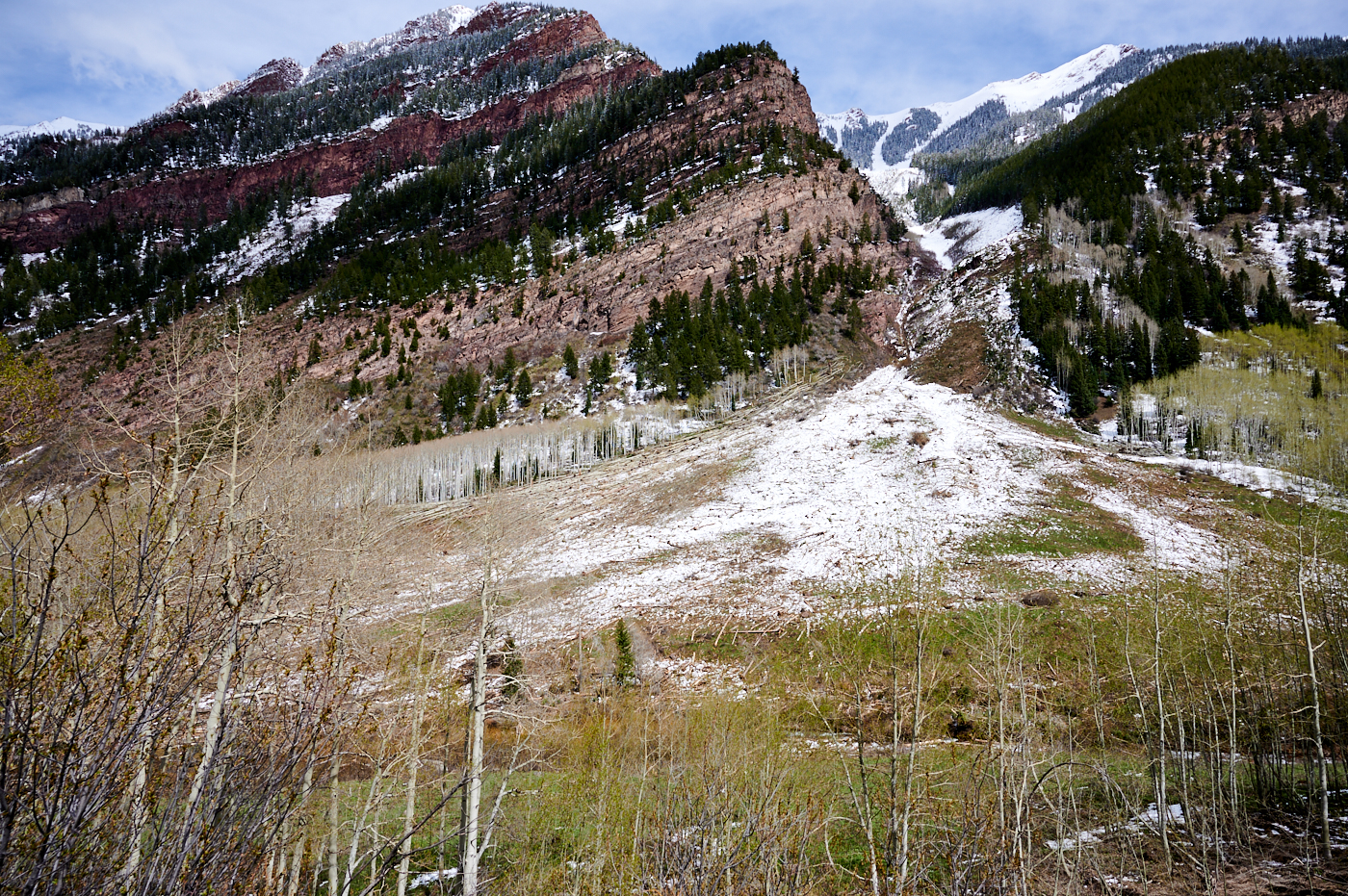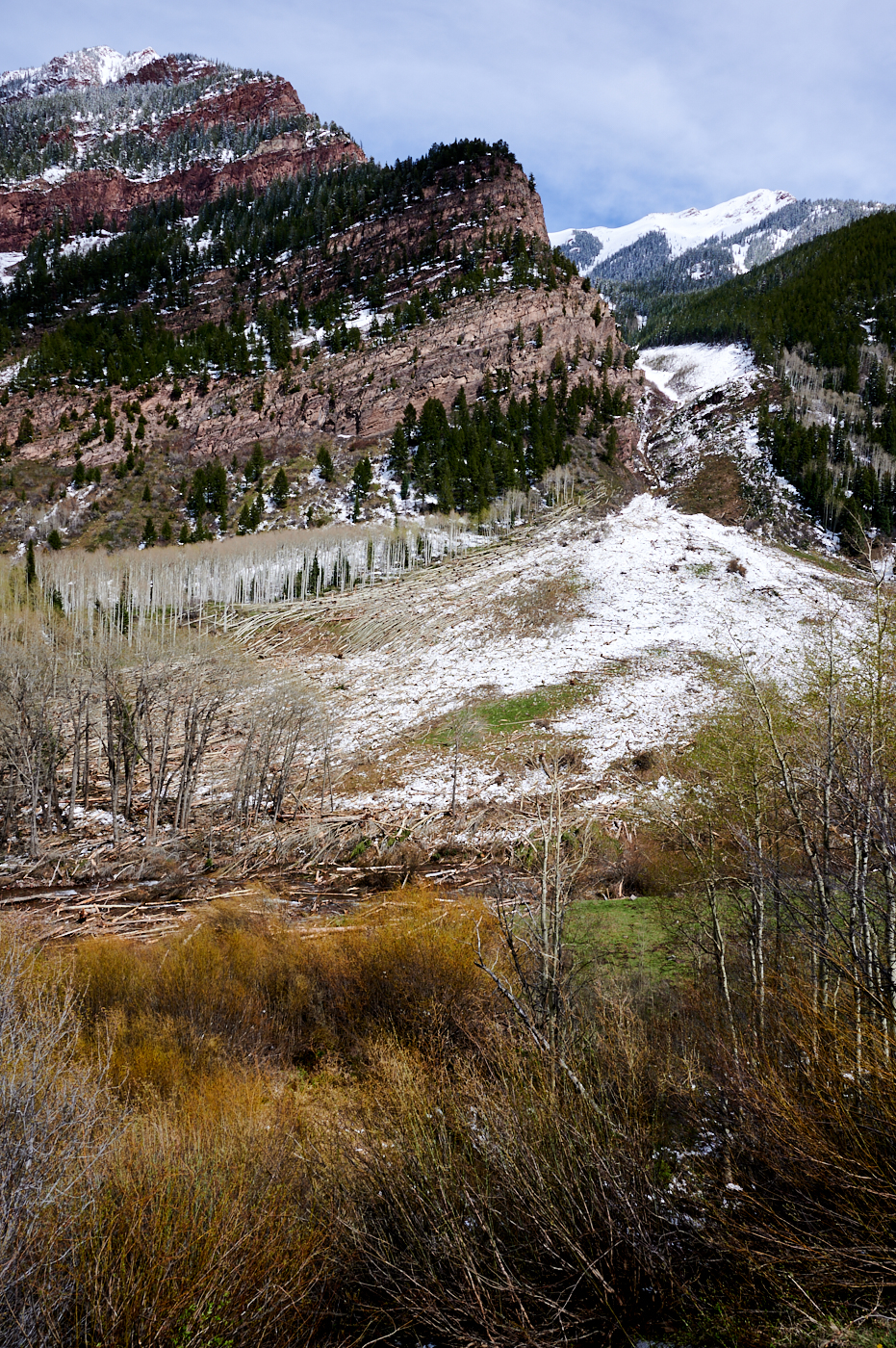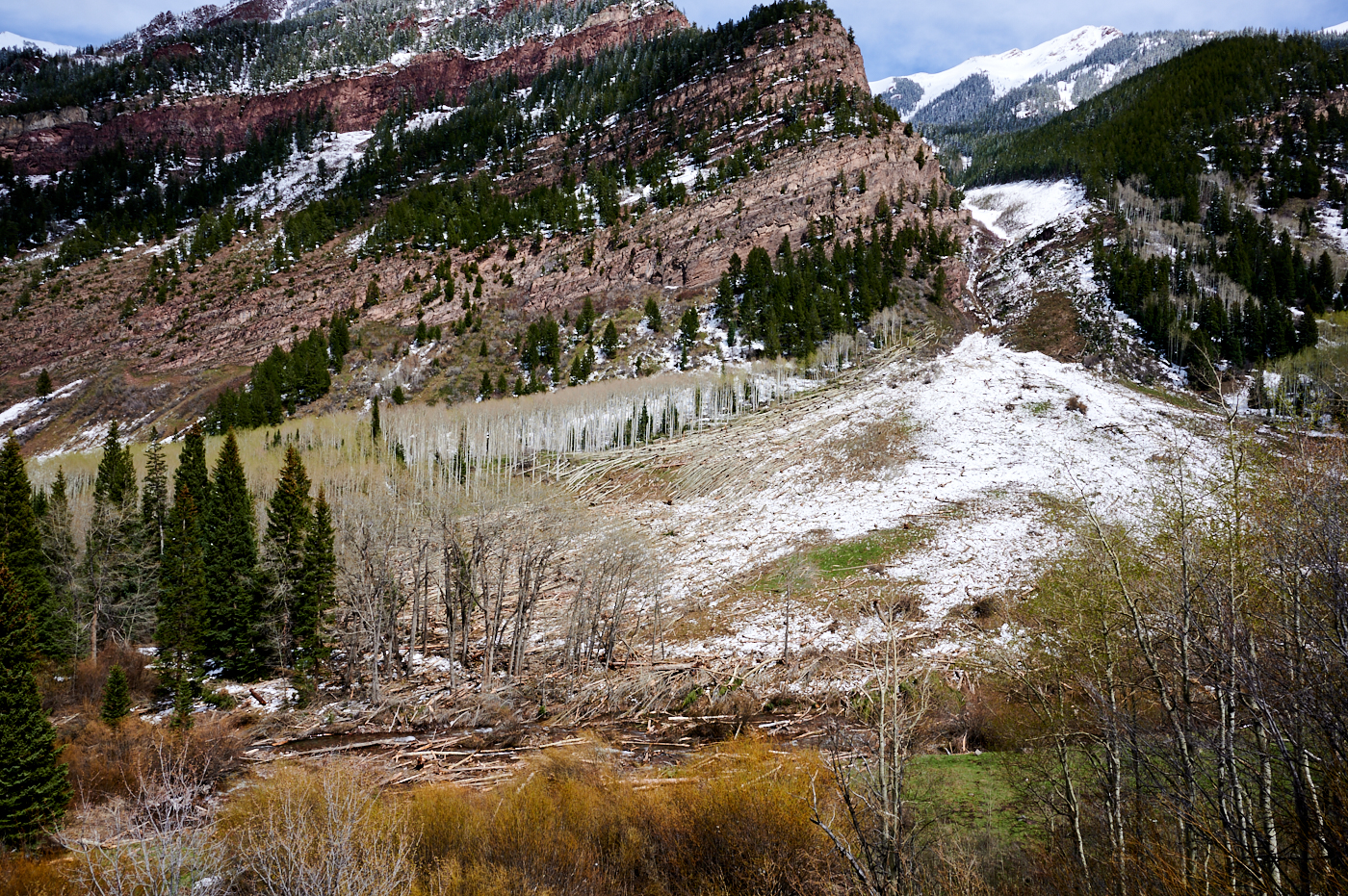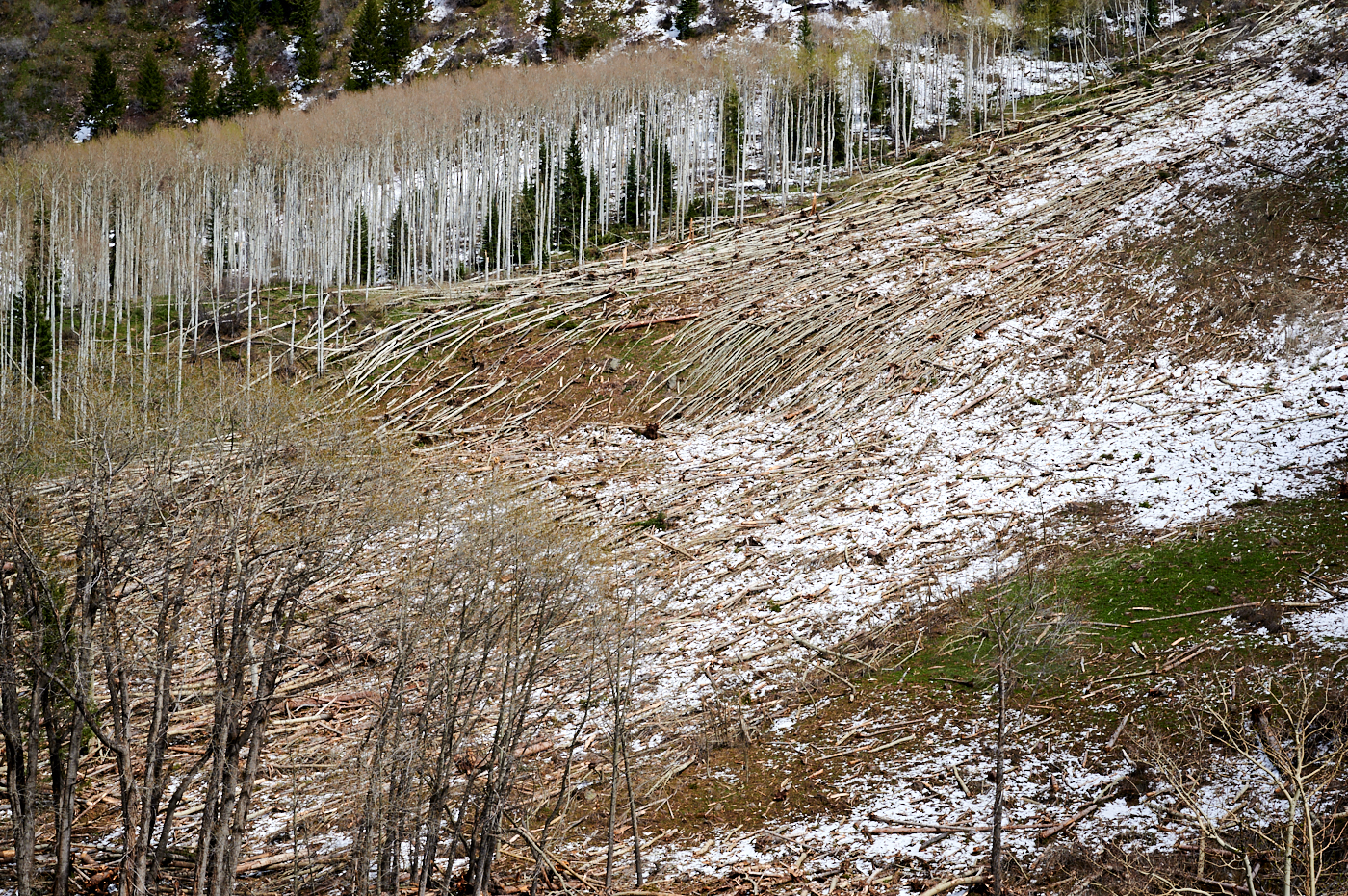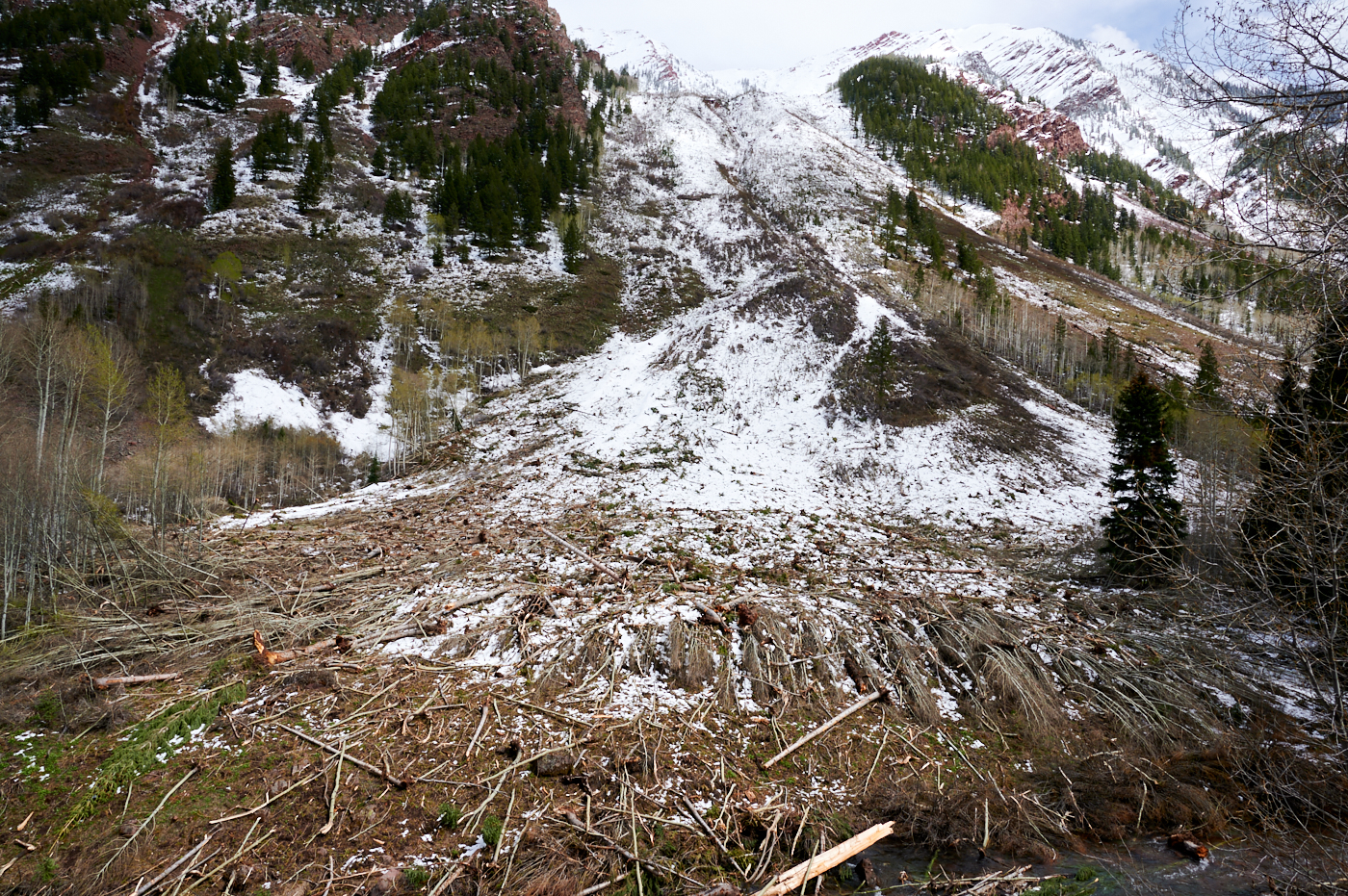I was fortunate to get a sneak peak today to how the Maroon Lake area has changed over the winter. Below is a photo I took in approximately the same place last fall. If you find the tree that has broken off in the center to left of the photo right along the water line, it should give you a good idea of the amount of destruction that took place in just this one area.
At the other end of Maroon Lake an a different avalanche took out a bridge and left pine trees all over the river. I spotted a beaver sizing the area up to possibly make a new dam. This would definitely change the landscape. It will be interesting to see if the Forest Service allows this to happen “naturally”. (I doubt it–they make too much money here).
This area has changed. If they want to keep trails open, the summer staff working for the forest service will have to hand cut a majority of these trees and carry them out of the way. The wilderness act does not allow for any motorized tools or transportation. If you are planning on hiking in the area this summer or fall, well, it might take you a bit longer to go from point a to point b.
The rest of this post shows the incredible power in an avalanche. After witnessing the aftermath of this winter’s avalanches, I know why trauma (rather than asphyxiation) is most likely to kill you in an avalanche. It will be interesting to see how this area transforms over the summer and next few years.
The Bells themselves are as majestic as ever, and I still think this is one of the most magical places in our area–even with all of the debris around. For at least a few years to come, the impact of these avalanches will be a reminder of nature’s power. Man has learned to control a lot of things on our planet, but snow like this will not be controlled.

